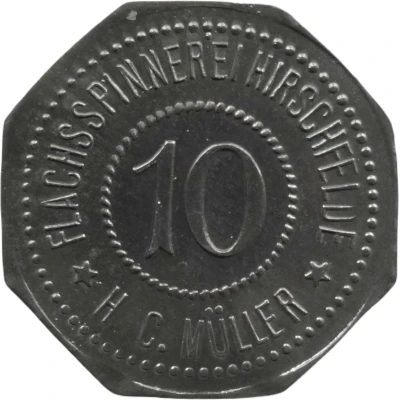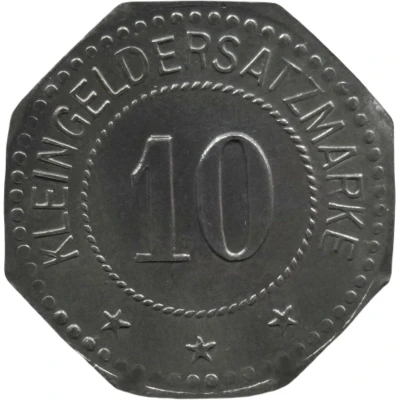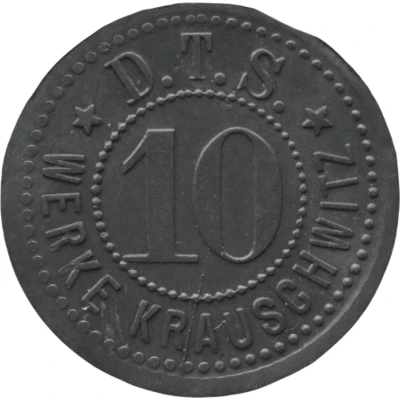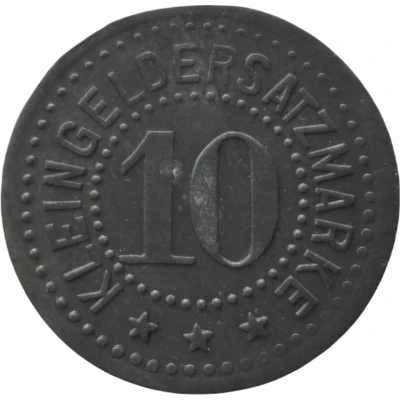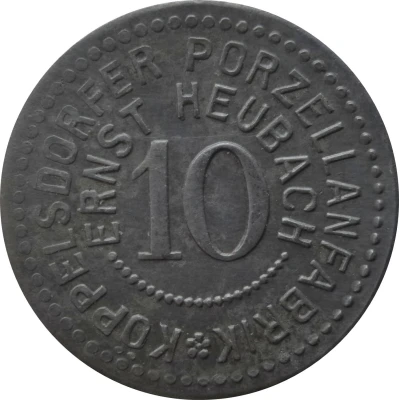
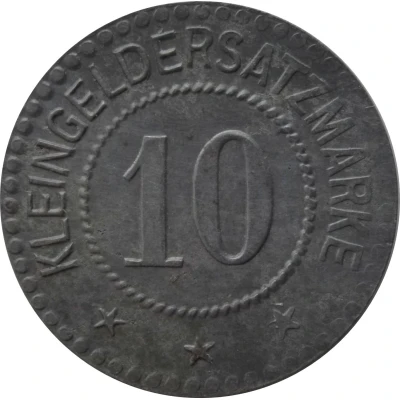

© Willem63 (CC BY-NC-SA)
10 Pfennigs - Köppelsdorf (Porzellanfabrik Ernst Heubach) ND
| Iron | 2.2 g | 20.1 mm |
| Issuer | German notgeld (Germany) |
|---|---|
| Type | Standard circulation coin |
| Value | 10 Pfennigs (10 Pfennige) (0.10) |
| Currency | Mark (1914-1924) |
| Composition | Iron |
| Weight | 2.2 g |
| Diameter | 20.1 mm |
| Thickness | 1.1 mm |
| Shape | Round |
| Technique | Milled |
| Orientation | Medal alignment ↑↑ |
| Demonetized | Yes |
| Updated | 2024-10-04 |
| Numista | N#320502 |
|---|---|
| Rarity index | 97% |
Reverse
Pearl rim, legend surrounding rope circle with denomination centered
Script: Latin
Lettering:
KLEINGELDERSATZMARKE
10
★ ★ ★
Edge
Plain
Comment
Menzel: BBBThe company was founded in 1887 by Ernst Heubach in Köppelsdorf. The Köppelsdorfer Porzellanfabrik Ernst Heubach produced bisque doll heads and arms, porcelain rollers for roller mills and porcelain items for electrical engineering needs. After 1910, Ernst Heubach specialized the company in the design and manufacture of character dolls. This also included the so-called negro dolls of the time. Heubach also produced heads for other doll manufacturers such as Adolf Wislizenus, Gebrüder Ohlhaver, Cuno & Otto Dressel or Luge & Co.
Interesting fact
One interesting fact about the 10 Pfennigs - Köppelsdorf (Porzellanfabrik Ernst Heubach) ND coin from German notgeld (Germany) made of Iron weighing 2.2 g is that it was issued during a time of economic crisis in Germany, specifically during the hyperinflation period of the 1920s. The coin was part of a series of emergency currency issued by local authorities, known as "notgeld," which translates to "emergency money" in English. The coin's design features the logo of the Porzellanfabrik Ernst Heubach, a porcelain factory in Köppelsdorf, and was likely used for everyday transactions in the local area. Despite its small denomination, the coin is now a sought-after collector's item due to its historical significance and rarity.
